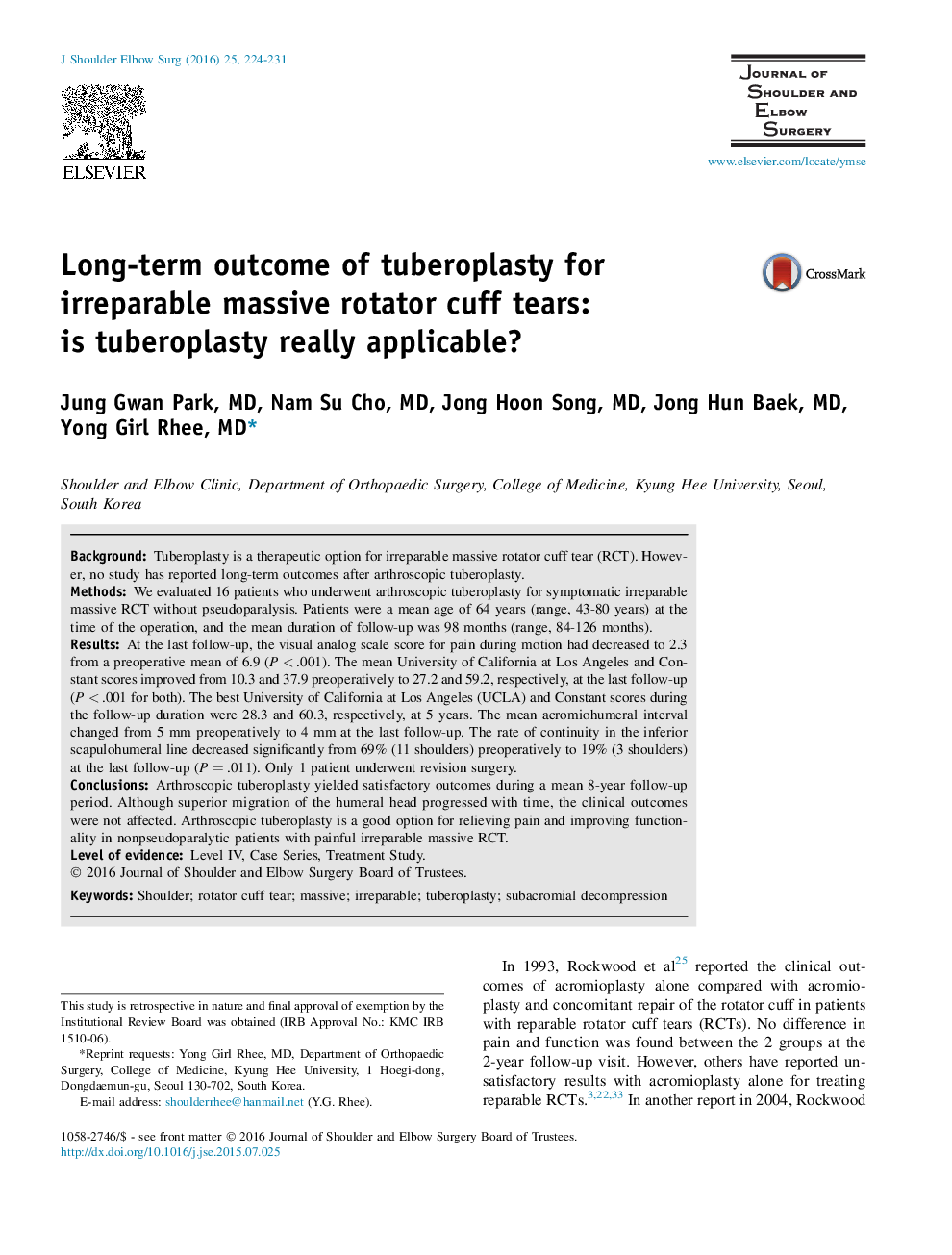| کد مقاله | کد نشریه | سال انتشار | مقاله انگلیسی | نسخه تمام متن |
|---|---|---|---|---|
| 4073229 | 1266976 | 2016 | 8 صفحه PDF | دانلود رایگان |

BackgroundTuberoplasty is a therapeutic option for irreparable massive rotator cuff tear (RCT). However, no study has reported long-term outcomes after arthroscopic tuberoplasty.MethodsWe evaluated 16 patients who underwent arthroscopic tuberoplasty for symptomatic irreparable massive RCT without pseudoparalysis. Patients were a mean age of 64 years (range, 43-80 years) at the time of the operation, and the mean duration of follow-up was 98 months (range, 84-126 months).ResultsAt the last follow-up, the visual analog scale score for pain during motion had decreased to 2.3 from a preoperative mean of 6.9 (P < .001). The mean University of California at Los Angeles and Constant scores improved from 10.3 and 37.9 preoperatively to 27.2 and 59.2, respectively, at the last follow-up (P < .001 for both). The best University of California at Los Angeles (UCLA) and Constant scores during the follow-up duration were 28.3 and 60.3, respectively, at 5 years. The mean acromiohumeral interval changed from 5 mm preoperatively to 4 mm at the last follow-up. The rate of continuity in the inferior scapulohumeral line decreased significantly from 69% (11 shoulders) preoperatively to 19% (3 shoulders) at the last follow-up (P = .011). Only 1 patient underwent revision surgery.ConclusionsArthroscopic tuberoplasty yielded satisfactory outcomes during a mean 8-year follow-up period. Although superior migration of the humeral head progressed with time, the clinical outcomes were not affected. Arthroscopic tuberoplasty is a good option for relieving pain and improving functionality in nonpseudoparalytic patients with painful irreparable massive RCT.
Journal: Journal of Shoulder and Elbow Surgery - Volume 25, Issue 2, February 2016, Pages 224–231